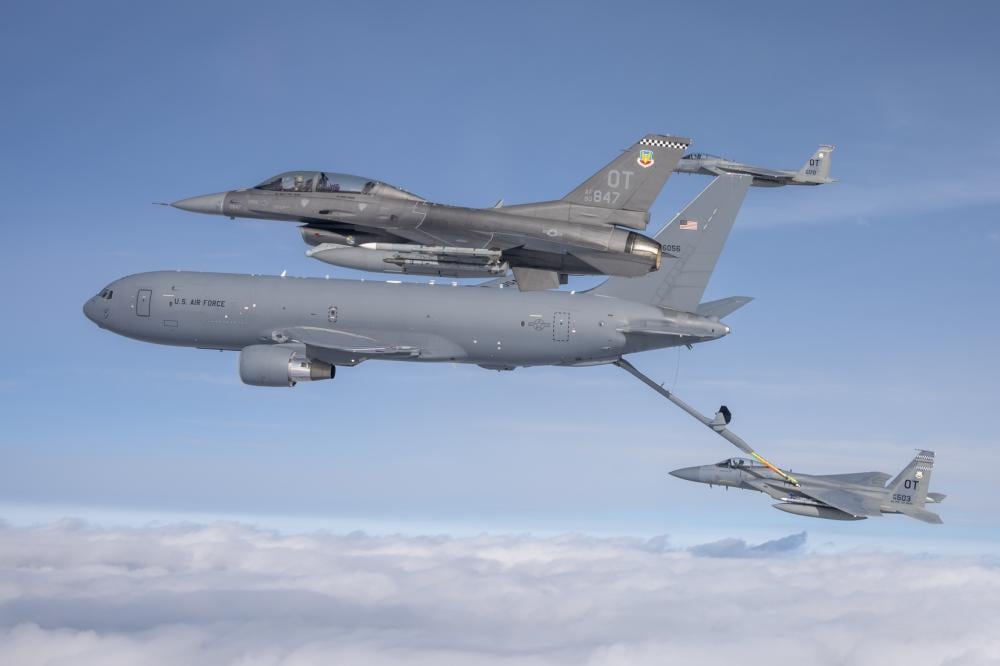Officials in the Air Force’s mobility enterprise are considering amending rules to allow just two crew members onboard the Boeing KC-46 Pegasus tankers during dangerous missions, raising eyebrows among airmen.
Air Mobility Command is discussing the option as part of how it may handle war in the Indo-Pacific, where it believes large, slow jets including tankers would be more vulnerable to attack from Chinese anti-aircraft missiles. Shrinking the number of airmen onboard a tanker could help minimize potential troop casualties while still getting combat jets the fuel they need.
A typical tanker sortie involves a pilot, a co-pilot and a boom operator. The boom operator can double as a cargo loadmaster on some missions, or nurses and medical technicians can join for aeromedical evacuations.
The Air Force said the notion of a slimmed-down crew, with one pilot and one refueling boom operator, isn’t set in stone. Nor would it necessarily become standard procedure.
“The command is currently reassessing minimum flight crew requirements as we explore and validate new tactics, techniques and procedures oriented towards a dynamic, future fight,” AMC spokesperson Maj. Hope Cronin told Air Force Times July 15.
Cronin said the command would need to approve a waiver so airmen can try out the skeleton crew concept in exercises like Mobility Guardian, the Air Force’s premier event for practicing military transportation missions.
AMC staff are assessing whether a pair of airmen could safely handle a KC-46 on their own before they sign off on that waiver. They also have to make sure the command has the authority to make that change.
RELATED

Not everyone is a fan of the suggestion.
On July 15, a Facebook page that is popular with airmen posted an anonymous allegation that AMC had hatched the idea because of a pilot shortage at McConnell Air Force Base in Kansas.
“This is going to put KC-46 aircrew in potentially dangerous situations and must … be stopped,” it said.
Cronin denied that the idea is connected to pilot retention.
Nevertheless, meme accounts pilloried the plan on social media — dealing another blow to the KC-46′s image amid a slew of technical difficulties that have slowed the tanker’s entrance into regular combat operations.
The troubled airframe is cleared to “support 97% of the daily joint force air refueling demands,” AMC said June 1, but problems with key components such the Pegasus’s fuel boom and remote vision system, which shows airmen where the boom is outside the jet, keep it from routinely flying aerial refueling missions.
The Pegasus is intended to be a more versatile, resilient tanker than earlier designs and carry up to 65,000 pounds of cargo. Officials expect it will be only provisionally functional until around 2024 or so, when hardware and software fixes are available.
The Air Force plans to buy at least 179 KC-46 airframes under a $4.9 billion contract, but could sign on for more. For its part, Boeing has accumulated more than $5 billion in expenses to address the tanker’s issues.
“We currently stop short of full combatant command deployments, barring emergency need,” Cronin told The War Zone.
Rachel Cohen is the editor of Air Force Times. She joined the publication as its senior reporter in March 2021. Her work has appeared in the Washington Post, the Frederick News-Post (Md.), Air and Space Forces Magazine, Inside Defense, Inside Health Policy and elsewhere.





